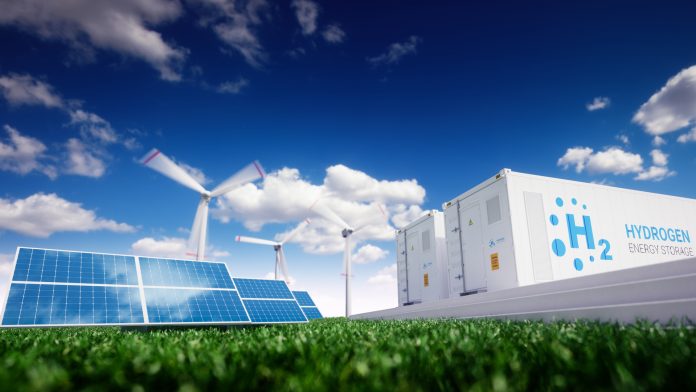Scientists at Argonne National Laboratory have been investigating methods to optimise oxygen evolution reaction in research that could make using hydrogen as a clean energy source more efficient and affordable.
Using hydrogen as a clean energy alternative depends on being able to efficiently split water. While hydrogen is the most abundant chemical element, it must be derived from another substance that contains it.
Currently, hydrogen is usually derived from methane gas. However, scientists are searching for ways to isolate this energy-carrying element without using any fossil fuels.
This research would have many useful applications, in designing new materials to make renewable fuels and store energy. For example, it could pave the way for hydrogen-fuelled cars that emit only water and warm air at the tailpipe.
Water unites hydrogen and oxygen. Hydrogen atoms in the form of molecular hydrogen must be separated out from this compound.
However, this process relies on an often-slow, significant step: oxygen evolution reaction (OER), which frees up molecular oxygen from water. Controlling this reaction is important not only to hydrogen production, but a variety of chemical processes, including ones found in batteries.
A new study, led by scientists at the U.S. Department of Energy’s Argonne National Laboratory, sheds light on a shape-shifting quality in perovskite oxides, a favourable type of material for speeding up the oxygen evolution reaction.
Perovskite oxides include a variety of compounds with a similar crystalline structure. Typically, they contain an alkaline earth metal or lanthanides such as La and Sr in the A-site, and a transition metal such as Co in the B-site, combined with oxygen in the formula ABO3.
Perovskite oxides can speed up the oxygen evolution reaction and are less expensive than precious metals such as iridium or ruthenium that can also be used in this reaction. However, perovskite oxides are not as efficient in accelerating the process.
“Understanding how these materials can be active and stable was a big driving force for us,” said Pietro Papa Lopes, an assistant scientist in Argonne’s Materials Science division who led the study. “We wanted to explore the relationship between these two properties and how that connects to the properties of the perovskite itself.”
In water electrolyser systems, which split water into hydrogen and oxygen, perovskite oxides interact with an electrolyte made of water and special salt species, forming an interface that enables the device to operate.
As electrical current is applied, that interface is critical in kicking off the water-splitting process: “The material’s surface is the most important aspect of how the oxygen evolution reaction will proceed: how much voltage you need, and how much oxygen and hydrogen you’re going to be producing,” Lopes explained.
The surface of perovskite oxide differs from the rest of the material, and changes over time. “Once it’s in an electrochemical system, the perovskite surface evolves and turns into a thin, amorphous film,” Lopes commented. “It’s never really the same as the material you start with.”
The group combined theoretical calculations and experiments to figure out how the surface of a perovskite material evolves during the oxygen evolution reaction. They found that strontium dissolution and oxygen loss from the perovskite were propelling the formation of this amorphous surface layer.
“The last missing piece to understand why the perovskites were active towards the OER was to explore the role of small amounts of iron present in the electrolyte,” Lopes said.
“Computational studies help scientists understand reaction mechanisms that involve both the perovskite surface and the electrolyte,” explained Peter Zapol, a physicist at Argonne and study co-author. “We focused on reaction mechanisms that drive both activity and stability trends in perovskite materials. This is not typically done in computational studies, which tend to focus solely on the reaction mechanisms responsible for the activity.”
The researchers discovered that the perovskite oxide’s surface evolved into a cobalt-rich amorphous film just a few nanometres thick. When iron was present in the electrolyte, it aided the acceleration of the oxygen evolution reaction, while the cobalt-rich film had a stabilising effect on the iron, keeping it active at the surface.
The results offer possible new strategies for designing perovskite materials.
“The OER is a part of so many processes, so the applicability here is quite broad,” Lopes explained. “Understanding the dynamics of materials and their effect on the surface processes is how we can make energy conversion and storage systems better, more efficient, and affordable.”



